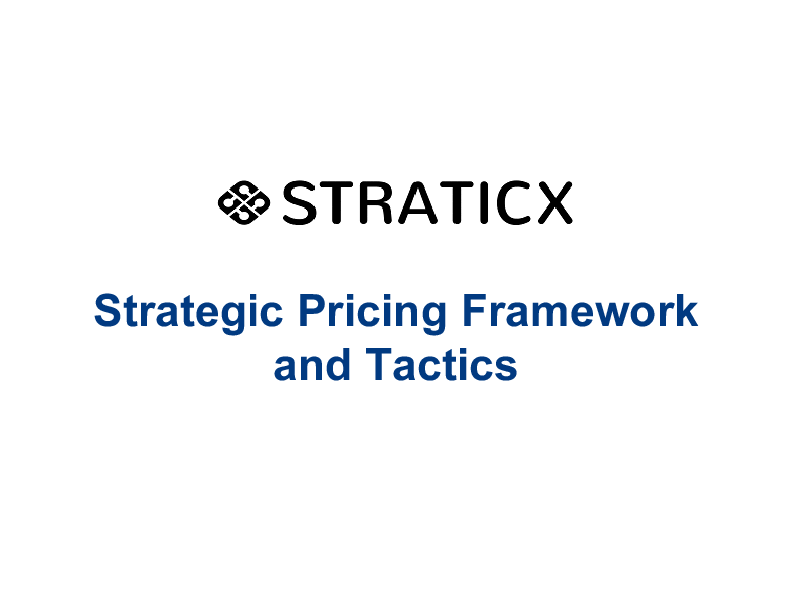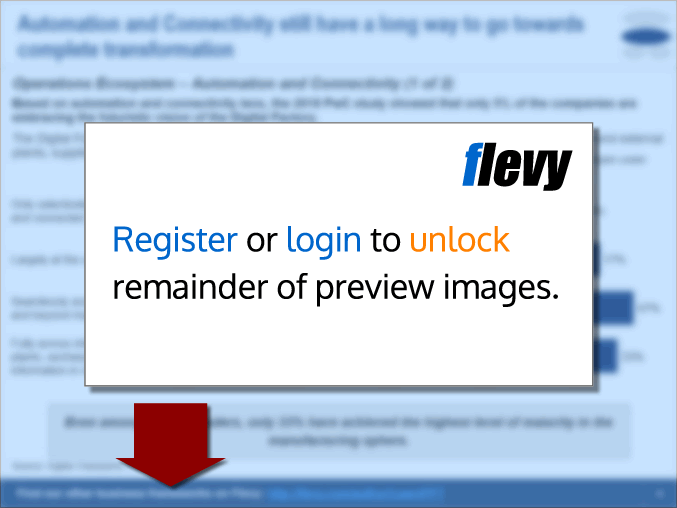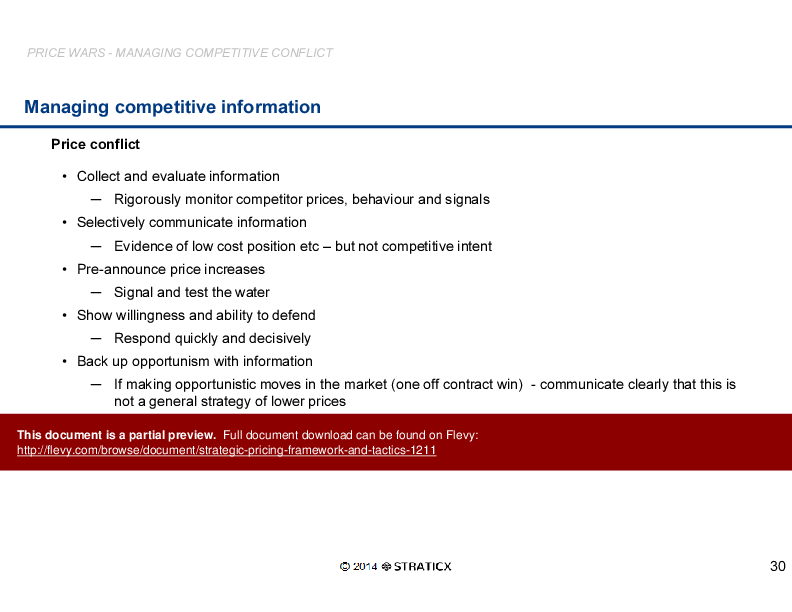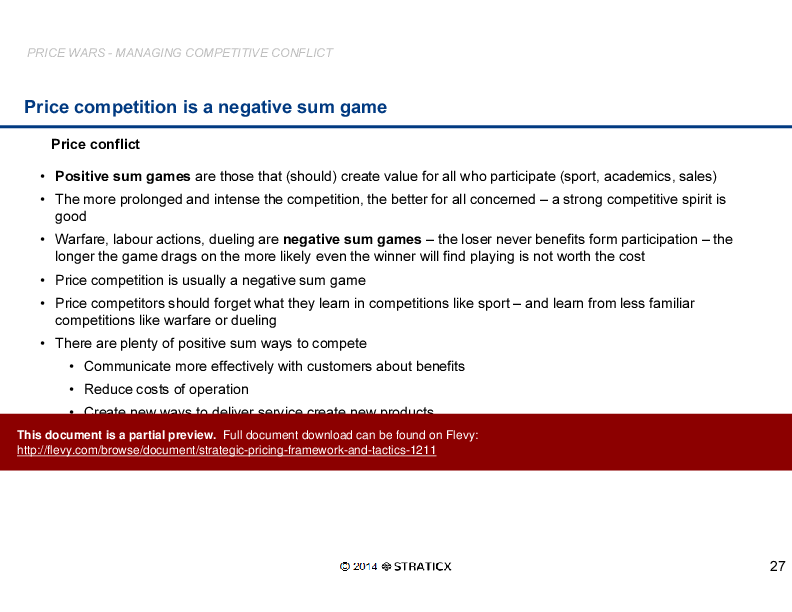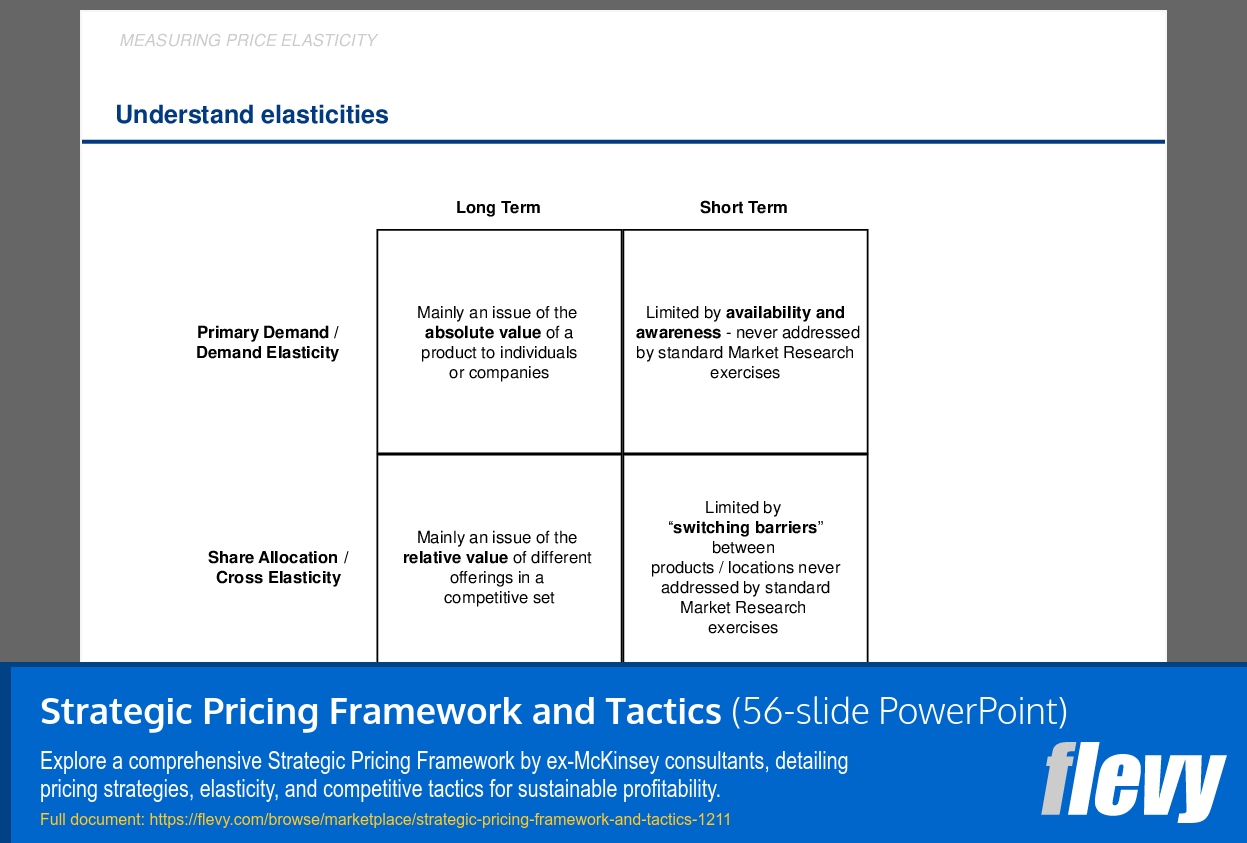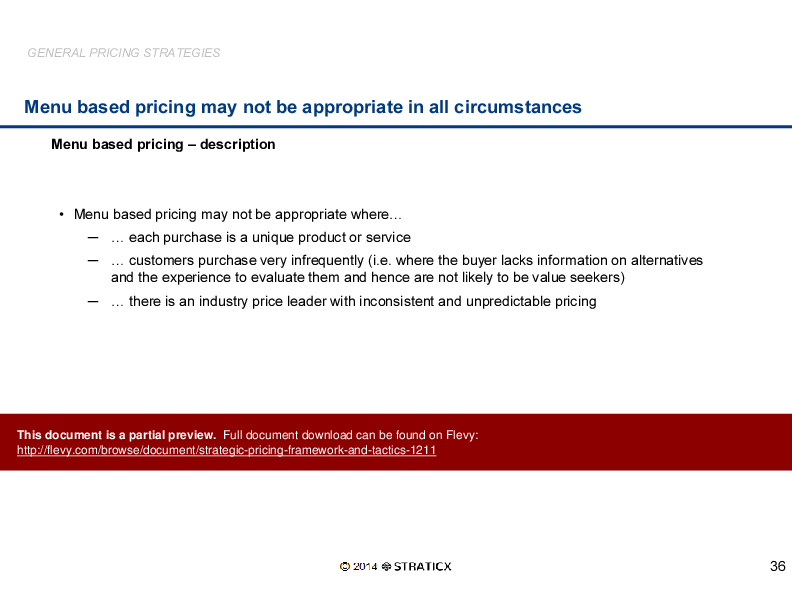Strategic Pricing Framework and Tactics (PowerPoint PPTX Slide Deck)
PowerPoint (PPTX) 56 Slides
PRICING STRATEGY PPT DESCRIPTION
Pricing products and services is one of the most complex and overlooked elements of a strategy. This document provides a guide and framework to help build better understanding of different strategies and tactics available.
Areas covered include:
Why is pricing important?
Pricing Strategy Development Framework
Scoping and Quick wins
Influencing the Purchase Decision
Price Wars – Managing Competitive Conflict
General Pricing Strategies
Bundling
Measuring Price Elasticity
This document is suitable for consultants and those in corporate roles and is designed to give some fundamental pricing knowledge to build on.
This comprehensive PPT delves into the intricacies of pricing strategies, emphasizing the shift from traditional cost-based pricing to value-based customer pricing. It highlights the critical question of maintaining margins while maximizing profit through proactive pricing approaches. The framework provided is designed to guide executives through the complexities of developing and implementing effective pricing strategies, ensuring a robust foundation for decision-making.
The document also explores the Pricing Strategy Development Framework, breaking it down into three essential steps: Scope, Quick Wins, and Optimize. Each step is meticulously detailed, offering deliverables such as self-assessment, data foundation, pricing options, scenario models, and implementation plans. This structured approach ensures that organizations can systematically address pricing challenges and capitalize on quick wins for immediate impact.
In addition, the document addresses common pricing issues in business markets, such as the erosion of premiums for value-added products and the impact of poorly controlled pricing processes. It provides actionable insights into managing competitive information, pre-announcing price increases, and leveraging strategic pricing to maintain industry leadership. This resource is indispensable for consultants and corporate professionals aiming to refine their pricing tactics and drive sustainable profitability.
Got a question about the product? Email us at support@flevy.com or ask the author directly by using the "Ask the Author a Question" form. If you cannot view the preview above this document description, go here to view the large preview instead.
Source: Best Practices in Pricing Strategy PowerPoint Slides: Strategic Pricing Framework and Tactics PowerPoint (PPTX) Presentation Slide Deck, STRATICX
PRICING STRATEGY PPT SLIDES
This document is available as part of the following discounted bundle(s):
Save %!
Complete Kit
This bundle contains 13 total documents. See all the documents to the right.
